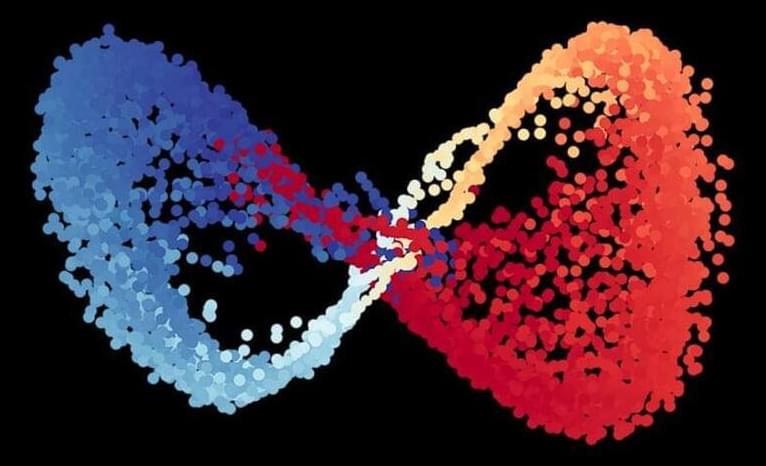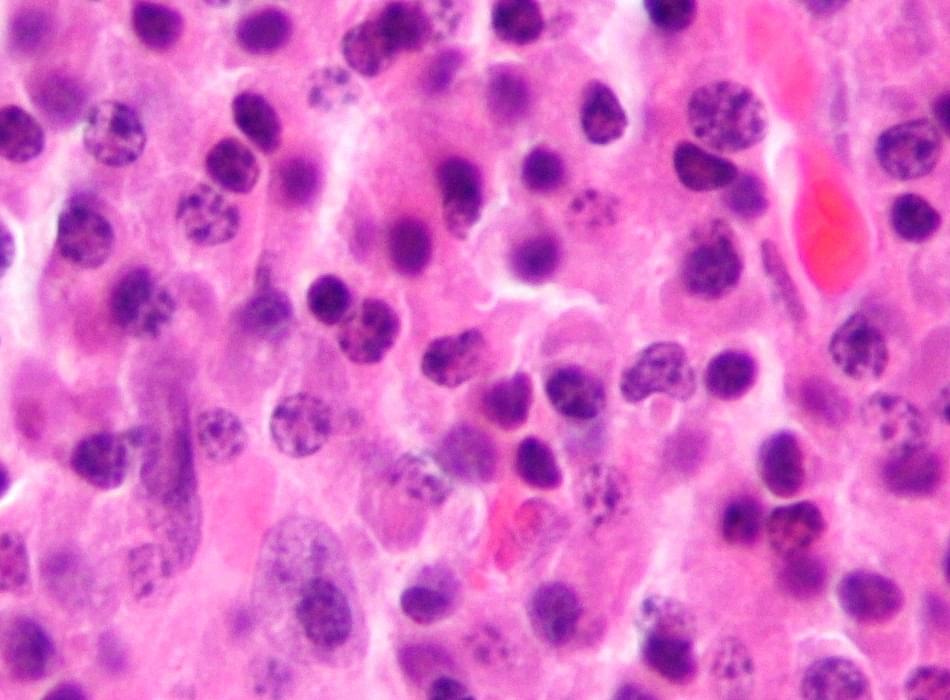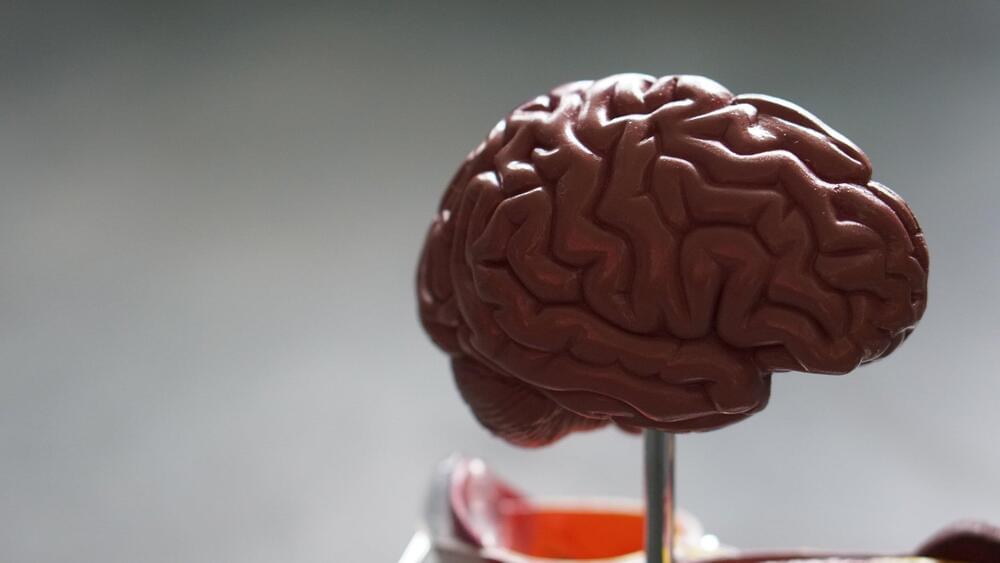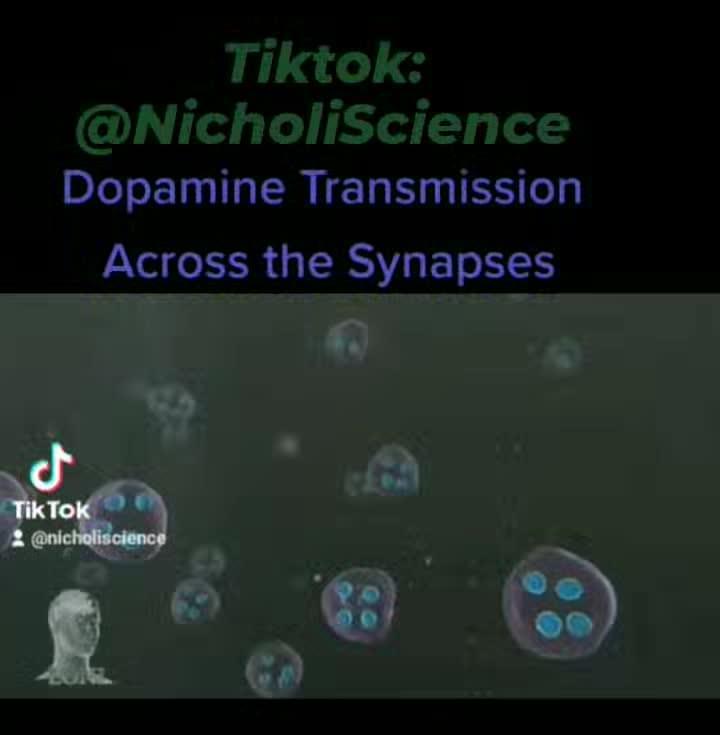Page 3708
Jul 26, 2022
The Art of Collaboration: NVIDIA, Omniverse, and GTC | Documentary Trailer
Posted by Saúl Morales Rodriguéz in categories: education, robotics/AI

With our brand new documentary premiering at #SIGGRAPH 2022, you’ll get to take a look behind the scenes of the 2022 Spring GTC and discover how NVIDIA’s creative, engineering, and research teams pushed the limits of NVIDIA GPUs, AI, USD, and @NVIDIA Omniverse to deliver our most watched GTC ever.
Global Documentary Premiere: Wednesday, August 10, at 10:00 a.m. PT
Continue reading “The Art of Collaboration: NVIDIA, Omniverse, and GTC | Documentary Trailer” »
Jul 26, 2022
Roboticists discover alternative physics
Posted by Saúl Morales Rodriguéz in categories: information science, physics, robotics/AI

Energy, mass, velocity. These three variables make up Einstein’s iconic equation E=MC2. But how did Einstein know about these concepts in the first place? A precursor step to understanding physics is identifying relevant variables. Without the concept of energy, mass, and velocity, not even Einstein could discover relativity. But can such variables be discovered automatically? Doing so could greatly accelerate scientific discovery.
This is the question that researchers at Columbia Engineering posed to a new AI program. The program was designed to observe physical phenomena through a video camera, then try to search for the minimal set of fundamental variables that fully describe the observed dynamics. The study was published on July 25 in Nature Computational Science.
Continue reading “Roboticists discover alternative physics” »
Jul 26, 2022
Researchers find link between genetic mutations and cancer treatment resistance
Posted by Saúl Morales Rodriguéz in categories: biotech/medical, genetics
Researchers from the University of Michigan Rogel Cancer Center, studying the molecular landscape of over 500 patients with an aggressive form of multiple myeloma, discovered a prevalence of activated key oncogenic pathways in these patients, much more than previously thought. Upwards of 45–65% of NF-κB and RAS/MAPK pathways each had alterations. The study was published in Nature Communications.
Further, Arul Chinnaiyan, M.D., Ph.D., director of the Michigan Center for Translational Pathology, and his team found a link between mutations and RASopathies, a certain group of genetic syndromes, in patients with relapsed treatment-resistant multiple myeloma. This was the first observation of its kind.
The team compared the molecular makeup of patients with untreated multiple myeloma to those with the relapsed treatment-resistant version of the disease. Comparing these patients allowed researchers to describe drivers of the more aggressive form of multiple myeloma.
Jul 26, 2022
Researchers confirm brain region’s role in mind-body communication
Posted by Saúl Morales Rodriguéz in categories: biotech/medical, neuroscience
University of Iowa researchers have confirmed in a new study that a specific region in the brain is critical to governing the mind’s communication with the body’s motor control system. The findings could yield advances in treatment for Parkinson’s disease, as declining motor coordination is a central symptom of the disorder.
In experiments with humans, the researchers pinpointed the subthalamic nucleus as the region in the brain that communicates with the motor system to help the body stop an action. This communication is vital because it helps humans avoid surprises and react to potentially dangerous or unforeseen circumstances.
The subthalamic nucleus is a tiny grouping of cells that is part of the basal ganglia, which is a key circuit in controlling movement. The basal ganglia takes initial motor commands generated in the brain and either amplify or halt specific parts of those commands as they pass from the central nervous system to the spinal cord.
Jul 26, 2022
Alcohol consumption and telomere length: Mendelian randomization clarifies alcohol’s effects
Posted by Saúl Morales Rodriguéz in categories: business, genetics, life extension
Observational studies of the relationship between alcohol use and telomere length have produced conflicting results. The largest such study to date, of 4,567 individuals, found no association between alcohol intake and either baseline or longitudinal change in telomere length [9]. Another analysis of two American cohorts (n = 2623) also reported null findings [10]. On the other hand, a few small studies (sample size range: 255‑1800) have observed associations with heavy drinking or AUD. Participants with AUD have been reported to have shorter telomeres compared to healthy controls [11]. A longitudinal study of Helsinki businessmen observed that higher midlife alcohol consumption was associated with shorter telomere length in older age [8]. Drinking 30 g/day of alcohol in older participants was associated with shorter telomeres in a Korean study [12]. Associations were stronger in those experiencing the alcohol flush reaction, raising the intriguing possibility that acetaldehyde, ethanol’s toxic breakdown product, is mechanistically involved. In a recent review of 27 studies, 10 showed significant associations between alcohol use and telomere length [13]. The studies included cross-sectional and longitudinal designs. The majority comprised European participants with ages ranging from the third to seventh decade. Most studies observed positive associations between alcohol and LTL. However heterogeneity between studies in methods of quantifying telomere length and categorizing alcohol intake hindered meta-analysis and aggregation of the data.
MR seeks to identify potentially causal determinants of an outcome. It estimates the association between genetically predicted levels of an exposure and an outcome of interest. Residual confounding and reverse causation aim to be less of a concern than in most other methods of analyzing observational data [14]. With MR, genetic proxies can be used to study the effects of genetically-predicted variability in alcohol consumption or AUD risk. To our knowledge, no MR study of alcohol and telomere length has yet been attempted.
We conducted a large observational study of two alcohol phenotypes, alcohol consumption and AUD, and leucocyte. We then performed linear MR analyses to investigate the evidence for a causal effect between alcohol consumption/AUD and LTL. Estimates generated by our observational and genetic methods were compared. Genetic distinction between different alcohol use traits motivates their separate analysis. Quantity/frequency measures such as drinks per week and AUDIT-C (Alcohol Use Disorders Identification Test Consumption, a 3 item screening tool), while moderately genetically correlated with AUD, have distinct patterns of genetic correlation with other traits [13]. Furthermore, as there has been much speculation about potential J-shaped relationships between alcohol and health outcomes [15], we performed a non-linear MR analysis to examine the shape of the relationship between alcohol consumption and telomere length.
Jul 26, 2022
Stop All Hypersonic Weapons Absolutely and Sink Entire Taiwan Invasion At Once
Posted by Greg Allison in categories: military, space travel

Multiple ways to stop hypersonic missiles with current (non hypersonic) technology.
Awesome deals for long term food supplies for those long missions to deep space (or prepping in case your spaceship crashes: See the Special Deals at My Patriot Supply: www.PrepWithGreg.com.
Continue reading “Stop All Hypersonic Weapons Absolutely and Sink Entire Taiwan Invasion At Once” »
Jul 26, 2022
Robot grabs and breaks finger of 7-year-old opponent during chess tournament
Posted by Shane Hinshaw in category: robotics/AI
A chess-playing robot fractured the finger of its 7-year-old opponent during a tournament in Moscow last week.
The incident happened after the boy hurried the artificial intelligence-powered robot, the president of the Moscow Chess Federation told the Russian state news agency Tass. “The robot broke the child’s finger — this, of course, is bad,” Sergey Lazarev said.
Video of the incident, which occurred at the Moscow Chess Open competition Tuesday, went viral on social media after a post by the local outlet Baza News.
Jul 26, 2022
Look: New images reveal Mars canyon’s stunning depths
Posted by Atanas Atanasov in category: space
The European Space Agency released new images of one of the deepest regions on the planet from its Mars Express orbiter.
ESA’s Mars Express orbiter imaged the stunning depths of Mars’ Valles Marineris, a gaping crevasse that is miles deeper than Earth’s Grand Canyon.















